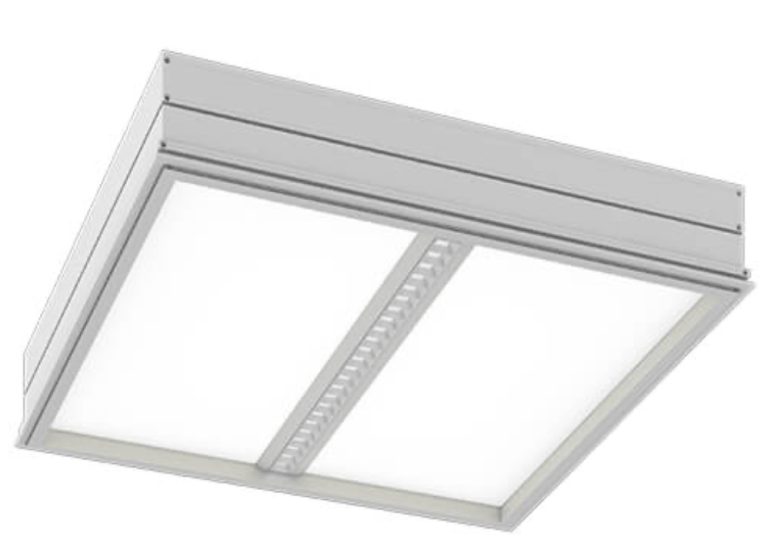Marrying Deep Dim with Color Tuning
By Deborah Perkins

How Superior Dimming Offers New Scope to Create Atmospheric and Emotional Effects
Marrying deep dimming with colour tuning gives lighting designers greater freedom and control
If the higher purpose of lighting, beyond mere illumination, is to create mood and atmosphere, then dimming is an important tool for achieving these effects. While basic dimming offers some scope to modify the user’s experience of a lighting scheme, sophisticated capabilities extend the range of effects that lighting designers can create and strengthen their emotional impact. These extended capabilities allow the user to marry control of color with control of light intensity, and to reduce intensity down to an almost imperceptible level of brightness.
In eldoLED products, these features are called Dim to Warm and Dim to Dark, and the effects which they enable the lighting designer to create are valuable to users in settings as varied as restaurants and hotels, auditoriums, and high-end residential lighting.
Creating a Relaxing, Effortless Ambiance
At its simplest, the purpose of basic dimming is to enable the user to control the intensity of a fixture’s or scheme’s output so that it casts the right quantity of light on a scene at all times. This ‘right’ quantity of light is determined by the function of the light. In a hotel’s restaurant, for instance, lighting in the kitchen is task-oriented; the emotional effect of kitchen lighting is of no importance.
In the hotel’s dining room, lighting design is in part task-oriented – diners generally want to see what they are eating. But its primary function is to evoke atmosphere and mood. When serving breakfast, this mood might be alert and lively; in the evening, the same space might need to feel cozy and relaxing.
Both these effects can be produced by a single set of LED fixtures if they have Dim to Warm capability: as light intensity is reduced, the light is automatically shifted from a cooler to a warmer color temperature. This effect mimics the operation of incandescent bulbs, which cast a warmer light as they are dimmed. Unlike incandescent bulbs, however, LED lights offer total control over the colour change, within the boundaries set by two sets of cooler and warmer LEDs.
The technology which underpins the Dim to Warm capability is the LightShape firmware in all SOLOdrive drivers that have two LED outputs. (The SOLOdrive products are also available in versions with a single output.) With LightShape, the creation of a unique ambiance is accomplished in two simple stages:
· First, the fixture manufacturer loads the colour and flux binning characteristics of the luminaire’s two sets of LEDs into the LightShape firmware, using eldoLED’s familiar FluxTool software
· Then, again using FluxTool, a custom dimming profile can be defined. This can be a linear shift from the CCT at full brightness (when both sets of LEDs are fully on) to the CCT specified at minimum brightness. Alternatively, the user can specify exact CCT values at every point on the dimming curve.
So a fixture based on a SOLOdrive driver with LightShape technology offers the lighting designer or specifier much greater scope to evoke a mood than is possible with basic dimming alone. In a hotel restaurant, the breakfast serving of bright, cool-white light can be dimmed down to a cozy amber glow for the evening’s diners. And because the effect is controlled by the driver’s LightShape firmware, the colour and intensity are uniform across all the luminaires in an installation. This uniformity even extends across luminaires from different manufacturers when all the luminaires are based on a SOLOdrive driver with LightShape technology.
It is also worth noting that the Dim to Warm effect is compatible with any standard dimming control, including 0-10V and any flavour of DALI. Since the programming is implemented in LightShape firmware, there is no need for a complex control protocol: the driver’s dimming controls are automatically color-aware.
At the Border Between Light and Darkness
With LightShape, dimming acquires a new emotional dimension. This ability to transform a space from bright and lively to cozy and relaxing with a simple dimming command is beyond the capability of ordinary dimming drivers.
But in fact, the limitation of many drivers’ dimming function goes further than this.
At deep dimming levels, lighting designers want to be able to control light intensity with the same granularity as they can at the brighter end of the intensity range. And because of the logarithmic response of the human eye to changes in light intensity, this calls for a very deep dimming capability. The graph below shows how the eye perceives actual measured changes in brightness. When a light is dimmed to 1%, the human eye sees it as 10% of full brightness.
The human eye has a logarithmic response to changes in brightness. (Source: IESNA Handbook, 9th edition)
Yet many commercial LED drivers provide a dimming capability which only reduces intensity down to 1%. As the graph shows, this leaves fully 10% of the intensity change as perceived by the user uncontrolled.
Just as bad, it means that the transition from dimmed to off involves a perceptible step directly from 10% perceived brightness to dark. In many settings, notably in concert halls and theaters, this jarring step is unattractive and unwanted.
A superior option is the one provided by the SOLOdrive, DUALdrive, LINEARdrive and POWERdrive drivers from eldoLED: granular dimming control throughout the range from 100% to 0.1%.
This capability has two important benefits:
· It enables Dim to Dark operation. In concert with any supported control technology, including 0-10V and DALI, lights can be smoothly dimmed to below 1%, and then to off, so that the step from light to dark is almost imperceptible. At 0.1% dimmed, the perceived effect is just 3% of full brightness.
· At very low light levels, the user maintains tight, granular control over light intensity. In a theater, for instance, house lights are normally kept on at a very low level during a performance. With an eldoLED driver, the lighting designer can choose the level of this background lighting: if 0.1% is too dim, it can be raised in 0.1% increments to any desired value.
Deep dimming gives this design freedom. By contrast, with ordinary drivers which offer dimming down to 1%, the lowest level of background lighting that the designer can specify is perceived as 10% of full brightness.
How to Combine Dim to Warm with Dim to Dark
Deep dimming control is a separate feature from the Dim to Warm capability provided by LightShape technology.
Users of the SOLOdrive drivers with two LED outputs can implement both Dim to Dark and Dim to Warm capabilities in a luminaire. A SOLOdrive driver with a single LED output is for use with a single-colour luminaire, so can’t perform the colour tuning required for the Dim to Warm feature. So a SOLOdrive driver with a single output can only perform Dim to Dark.
A luminaire based on either a DUALdrive, LINEARdrive and POWERdrive driver can perform Dim to Dark. In addition, these types of drivers support colour tuning implemented via a colour-aware control technology such as DALI DT8 or DMX, which provides the capability to shift the colour of the light through the dimming cycle.
So lighting designers and specifiers have a choice over the range of emotional and atmospheric effects that they can create with eldoLED drivers. And they can be sure that all the eldoLED drivers’ dimming functions are backed by the unique Hybrid HydraDrive functionality, which ensures that dimming is flicker-safe across the entire dimming range.
Photography by Gavriilux, from the archive of Eleftheria’s Deko









